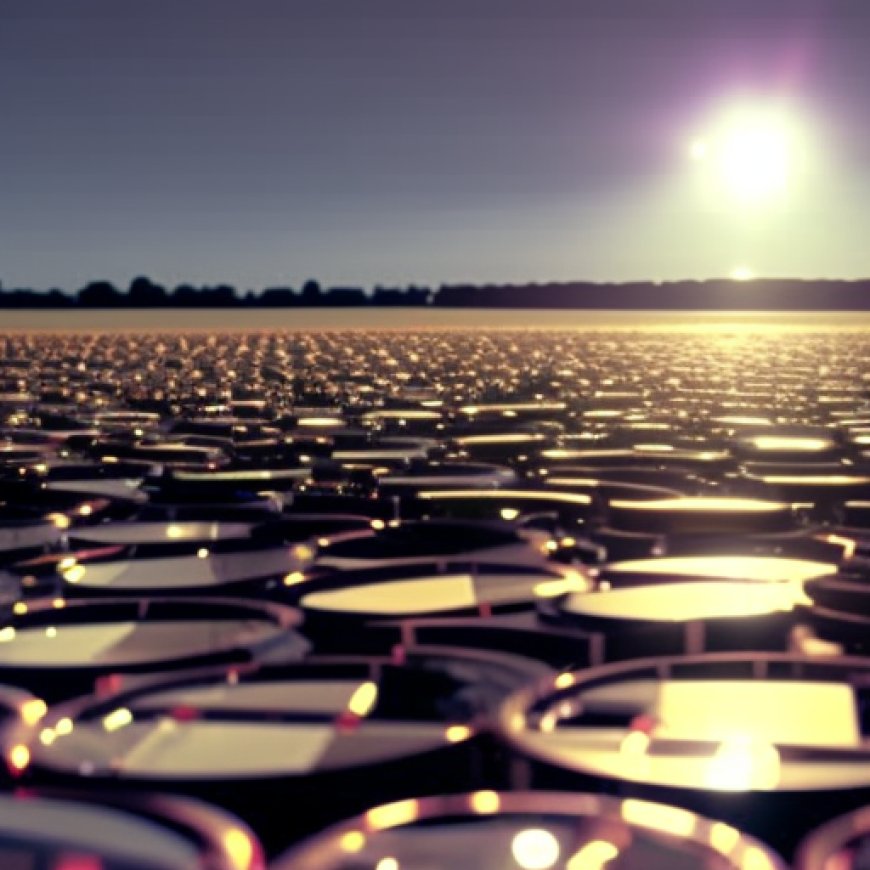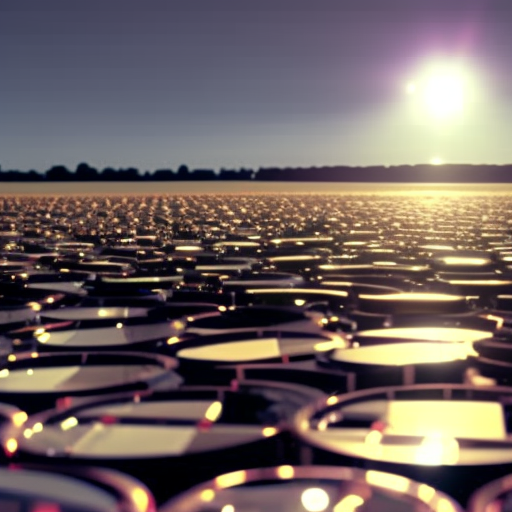Advancing circular economy in photovoltaics: The Hot Knife PV module recycling method
Advancing circular economy in photovoltaics: The Hot Knife PV module recycling method pv magazine International


Recycling PV Modules: The Hot Knife Method
Introduction
Recycling is a crucial aspect of achieving a circular economy in the photovoltaic (PV) industry, promoting sustainability and resource efficiency. However, recycling PV modules poses challenges, particularly in the separation of the front glass from the backsheet. To address this issue, Task 12 of the International Energy Agency’s Photovoltaic Power Systems Programme (IEA PVPS) has collaborated with a leading technology manufacturer to develop the Hot Knife method. This article presents a comprehensive environmental life cycle assessment of this innovative PV recycling technique.
Recycling: A Cornerstone of Circular Economy for PV
As the number of decommissioned PV modules increases, responsible end-of-life module management becomes crucial to minimize waste and maximize resource recovery. Recycling not only preserves valuable materials but also significantly reduces the industry’s environmental footprint, making it a key driver of sustainable growth.
PV modules are designed to withstand harsh environmental conditions for decades, demonstrating their durability. However, this durability poses challenges in the recycling process, particularly in separating the glass from other module layers. Traditional recycling methods struggle with efficient and cost-effective delamination of PV modules, necessitating an alternative approach.
Introducing the Hot Knife Method: A Novel Solution
The Hot Knife method offers an innovative solution to the delamination challenge. By utilizing thermal treatment, this technique melts the polymers that bind the glass to the backsheet, facilitating separation. Preliminary steps also remove the junction box, cables, and aluminum frames. The recovered materials include aluminum and glass sheets, as well as copper cables and cells/Ethylene-vinyl acetate (EVA) backsheets. This method streamlines recycling efforts, reduces energy consumption, and minimizes greenhouse gas emissions associated with recycling.
IEA PVPS Task 12 Collaboration: Assessing the Environmental Impacts
IEA PVPS Task 12 collaborated with a prominent PV technology manufacturer to assess the environmental impact of the Hot Knife method. The report “Life Cycle Assessment of Crystalline Silicon Photovoltaic Module Delamination with Hot Knife Technology” provides a holistic evaluation of the environmental impacts associated with the Hot Knife recycling process, from material extraction to module manufacturing, usage, and eventual recycling. The report compares the environmental impacts caused by the delamination process to those caused by producing these materials from primary resources.
Key Findings
The report highlights the impressive environmental efficiency of the Hot Knife method. It efficiently recovers aluminum and glass and separates the backsheet. The use of this technology contributes only 0.3% or less to the life cycle related environmental footprint of PV electricity in any impact category. Additionally, the environmental impacts of recovered materials are 80-98% lower compared to virgin materials. The Hot Knife method significantly reduces energy consumption, greenhouse gas emissions, and the overall environmental footprint, while also promoting resource efficiency within the PV industry.
Implementation and Future Prospects
The Hot Knife method is currently being used in one of the largest commercial-scale PV recycling facilities in the world (ENVIE in Saint Loubès, France) and some facilities in Japan. As more experience is gained with this technology, further improvements in energy and consumables efficiency are expected. Future life cycle assessment studies should include additional processes such as the treatment of copper cables, the treatment of the backsheet, and the recovery of copper and silver.
Conclusion
PV recycling is a crucial element in building a cleaner and greener future. The Hot Knife method offers an innovative and environmentally efficient solution to the challenges of PV module recycling. By minimizing waste, maximizing resource recovery, and reducing environmental impacts, this method contributes to the achievement of the Sustainable Development Goals (SDGs) outlined by the United Nations. Further research and implementation of this technology will drive the transition towards a sustainable energy landscape.
SDGs, Targets, and Indicators
1. Which SDGs are addressed or connected to the issues highlighted in the article?
- SDG 7: Affordable and Clean Energy
- SDG 9: Industry, Innovation, and Infrastructure
- SDG 12: Responsible Consumption and Production
- SDG 13: Climate Action
- SDG 15: Life on Land
The article discusses the importance of recycling in a circular economy and its contribution to a sustainable and resource-efficient future. This aligns with SDG 7, which aims to ensure access to affordable, reliable, sustainable, and modern energy for all. It also relates to SDG 9, which focuses on promoting inclusive and sustainable industrialization and fostering innovation. Additionally, the article highlights the reduction of environmental footprint and greenhouse gas emissions through recycling, supporting SDG 12 on responsible consumption and production, SDG 13 on climate action, and SDG 15 on life on land.
2. What specific targets under those SDGs can be identified based on the article’s content?
- SDG 7.2: Increase substantially the share of renewable energy in the global energy mix.
- SDG 9.4: Upgrade infrastructure and retrofit industries to make them sustainable.
- SDG 12.5: Substantially reduce waste generation through prevention, reduction, recycling, and reuse.
- SDG 13.2: Integrate climate change measures into national policies, strategies, and planning.
- SDG 15.2: Promote the implementation of sustainable management of all types of forests.
The article’s content implies the need to increase the share of renewable energy, upgrade infrastructure for sustainable industries, reduce waste generation through recycling, integrate climate change measures, and promote sustainable management of resources.
3. Are there any indicators mentioned or implied in the article that can be used to measure progress towards the identified targets?
- Percentage of renewable energy in the global energy mix
- Investment in sustainable infrastructure
- Waste generation and recycling rates
- Integration of climate change measures in policies and planning
- Sustainable management practices in the PV industry
The article mentions the environmental efficiency of the Hot Knife method in terms of reducing energy consumption, greenhouse gas emissions, and overall environmental footprint. These indicators can be used to measure progress towards the identified targets.
SDGs, Targets, and Indicators Table
| SDGs | Targets | Indicators |
|---|---|---|
| SDG 7: Affordable and Clean Energy | Increase substantially the share of renewable energy in the global energy mix. | Percentage of renewable energy in the global energy mix. |
| SDG 9: Industry, Innovation, and Infrastructure | Upgrade infrastructure and retrofit industries to make them sustainable. | Investment in sustainable infrastructure. |
| SDG 12: Responsible Consumption and Production | Substantially reduce waste generation through prevention, reduction, recycling, and reuse. | Waste generation and recycling rates. |
| SDG 13: Climate Action | Integrate climate change measures into national policies, strategies, and planning. | Integration of climate change measures in policies and planning. |
| SDG 15: Life on Land | Promote the implementation of sustainable management of all types of forests. | Sustainable management practices in the PV industry. |
Behold! This splendid article springs forth from the wellspring of knowledge, shaped by a wondrous proprietary AI technology that delved into a vast ocean of data, illuminating the path towards the Sustainable Development Goals. Remember that all rights are reserved by SDG Investors LLC, empowering us to champion progress together.
Source: pv-magazine.com

Join us, as fellow seekers of change, on a transformative journey at https://sdgtalks.ai/welcome, where you can become a member and actively contribute to shaping a brighter future.







